 A while back, I began thinking I needed to tackle the tough things I learned as a mom. But I have put it off. How do you talk about the tough stuff? I have given it a lot of thought. I know this is a direction I should go. I have wondered why. Maybe because times are hard right now, and I feel sure some struggling parents out there need to know that even very imperfect people can and do raise beautiful and successful families. So I will give it a go, and if I survive and you survive, I will know it was the correct move. : )
A while back, I began thinking I needed to tackle the tough things I learned as a mom. But I have put it off. How do you talk about the tough stuff? I have given it a lot of thought. I know this is a direction I should go. I have wondered why. Maybe because times are hard right now, and I feel sure some struggling parents out there need to know that even very imperfect people can and do raise beautiful and successful families. So I will give it a go, and if I survive and you survive, I will know it was the correct move. : )
At one time, we had one child just out of high school, three younger teens, and one pre-teen. That is a lot of hormones! Some of those kids were struggling in school and life. We weren’t getting much support from the school, community, or our church family. In fact, a couple of my children were shunned by families at church whose children they had played with for years. I guess our struggles were too scary for some of the parents we had spent a few decades with.
All that put me on edge. I felt like a failure, and I was mad. I wanted my family to look and feel like it had just a few years earlier and like my friends’ families looked. It was challenging to stay up until all the kids were back in the house and then get up in the morning and function. It was tough when a child didn’t come home, and I searched for them late into the night. It didn’t help that my sweet and worried husband was on the road five days a week for some of those years. Man, some days, I felt like I carried the weight of the world.
One afternoon one of my younger teens was mouthing off. I tried reasoning with her. She began hollering and talking very rudely. The tirade went on for a while, and finally, I hit her in the shoulder with my fist. WHAT!!! What kind of mother does that? Well, the kind I just described in the paragraph above. My daughter ran to her room and slammed the door. I fell to my knees and wept.
While I was weeping, I began to pray. I plead with my Heavenly Father to forgive me for not managing myself like an adult, for not being more long-suffering and loving. In my heart, I knew that I could never fix this. I had done irreparable damage to this important relationship.
But WAIT! Into my mind came this thought, “Go and put lotion on her feet.” You’re kidding, right? I had NEVER done that before. But it was a clear thought, and I have had many experiences calling on a power greater than myself. I knew what it felt like to get a response, and this was a response from that power.
I got up and walked down the hall. I felt as if I had lead weights on my ankles. That was the longest walk of my life! I was afraid because I didn’t want to be yelled at or rejected or pushed to the edge again. I couldn’t see how this could work. Not in a million years. I had just socked my fourteen-year-old daughter with my fist.
I have to be honest; I stood at that door, petrified to knock for over five minutes with a bottle of lotion in my hand. But I did knock. “Who is it?” “It’s mom. Can I come in?” “Yes.” I opened the door and sat on the bed. My daughter was sitting with her back against the wall, and her feet were stretched across the bed. I reached out, took one of her feet into my hands, and began to rub lotion on it. I rubbed that foot for at least three minutes. Then my daughter moved that foot away and gave me her other foot. I began lotioning that foot. We sat like this, with me rubbing her feet and she leaning against the wall, watching me.
Finally, she pulled her foot away. I looked at her and said, “Marie, I am so sorry I hit you. It was wrong, and I am sorry.” She said, “That’s OK.” Then she began talking, and before I knew it, all her anger, sadness, fears, and worries were spilling out. She was accusing Don and me of things, describing things in a way that was not how they happened. I wanted to defend us, her parents. I wanted her to understand what she didn’t see clearly, but in truth, my tongue was tied. I couldn’t utter a sound, and after a few minutes, I no longer wanted to. I wanted this sweet child to be able to say whatever she needed to say, right or wrong. I wanted her to know that she was safe with me. The tirade went on for at least fifteen minutes.
Then it stopped, just stopped. Marie looked at me, and I took her into my arms and said, “Marie, I am sorry. I love you.” And I was sorry. I was sad that I had not remained in control of my emotions, that she had angry feelings. I was sorry that she had stored so much emotion. I was sorrowful that my sweet daughter was struggling. She leaned into me, and I held her for a long time. Then we parted. I got up, touched her cheek, said “I love you” again, and left the room.
You would never have known I had hit her or that she had dumped on me for fifteen minutes. The energy was different for the rest of the evening. We smiled. It felt good. Oh, life didn’t get easier for our family or this child for a good while. But for that day and a few after, we were tied heart to heart.
This experience taught me two critical lessons
1. You can repair relationships. I saw firsthand that you can heal a relationship when you are invested and are willing to seek counsel outside of your own. For me, it was asking God. Others ask a counselor or therapist. When we want to heal a relationship with a child, and we are willing to seek a way, solutions come.
2. You must listen. Even if you want to defend yourself or feel it’s not true, you must be quiet and let your child know that you heard. More than rubbing Marie’s feet, I think it was the safety I gave her to say what was burdening her heart, true or not, that made all the difference. Despite my socking her, she saw and felt that I was a safe place for her. I know this is true because Marie would come to me for counsel, help, and hugs during the hard years.
One day, while she was still struggling herself, and we had other struggling children, I found a note. Marie had written it because she knew how hard it was for me, Don, and our family. She wanted to do for me what I had done for her on that long-ago day when I reached out to heal a relationship. She wanted to help me feel better.
An excerpt from that beautiful letter:
“You’re doing everything you can to try and make our home and family what it should be. I wanted to let you in on a secret of mine. Our house is a temple. I love my home. I come here for protection and solace. This place is a haven, a place for love and spiritual replenishment. When times are the worst, I long to be home where there’s peace for my soul. No mother. Your efforts are far from in vain! I wanted you to know how much I love you and how much I love my home.”
No matter what is happening in your family, if you stay the course, ask for help from divine and earthly sources and believe that meaningful relationships can be healed, it will be enough no matter how bumpy the road is.





 Experiments to Improve Family Relationships
Experiments to Improve Family Relationships
 “When art teacher Kandy Dea recently assigned fourth graders in her Walnut, Iowa, classroom to create a board game to play with a friend, she was shocked by one little boy’s response: He froze. “While his classmates let their imaginations run wild making up colorful characters and fantasy worlds, the little boy repeatedly said, “I can’t think of anything,” Ms. Dea says. Although she reassured him that nothing he did would be judged “wrong,” he tried to copy another student’s game, then asked if he could make a worksheet instead. She finally permitted him to make flashcards with right-and-wrong answers.
“When art teacher Kandy Dea recently assigned fourth graders in her Walnut, Iowa, classroom to create a board game to play with a friend, she was shocked by one little boy’s response: He froze. “While his classmates let their imaginations run wild making up colorful characters and fantasy worlds, the little boy repeatedly said, “I can’t think of anything,” Ms. Dea says. Although she reassured him that nothing he did would be judged “wrong,” he tried to copy another student’s game, then asked if he could make a worksheet instead. She finally permitted him to make flashcards with right-and-wrong answers.
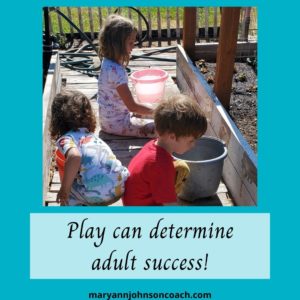 The POWER of Play
The POWER of Play
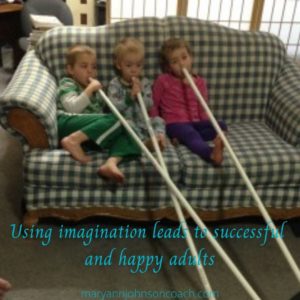
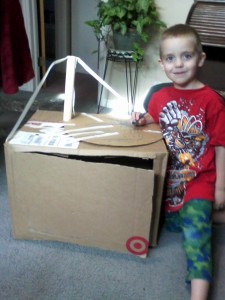
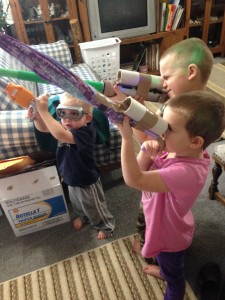


 Technology has been a boon in so many ways. I am amazed at how well versed my nine-year-old grandson is in the use of technology. I watch other kids, and I am equally impressed. But technology, for kids, also has downsides. Here is one that I regularly see with the children that I interact with often; they have a more challenging time filling their time when technology isn’t available.
Technology has been a boon in so many ways. I am amazed at how well versed my nine-year-old grandson is in the use of technology. I watch other kids, and I am equally impressed. But technology, for kids, also has downsides. Here is one that I regularly see with the children that I interact with often; they have a more challenging time filling their time when technology isn’t available.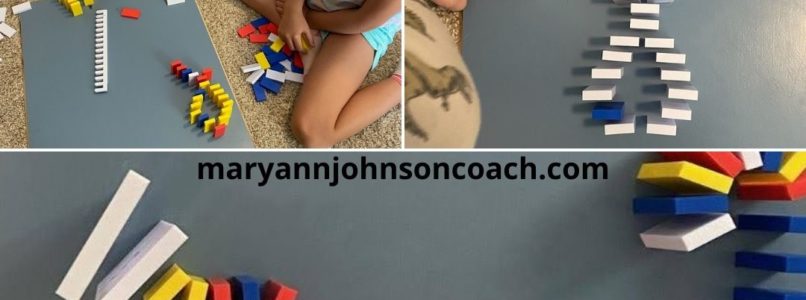
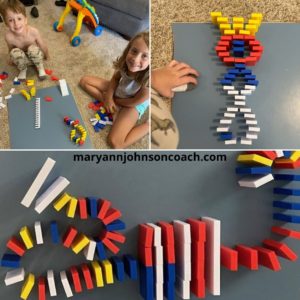 I have talked about children’s ‘SPARKS’ in numerous articles and in my book,
I have talked about children’s ‘SPARKS’ in numerous articles and in my book, 
 For many families, school has begun in earnest. Whether you are using the public system, a private system, or homeschooling, September usually means we are deep into it. Some years back, I wrote an article about how to help children remain lifelong learners, to become lovers of learning.
For many families, school has begun in earnest. Whether you are using the public system, a private system, or homeschooling, September usually means we are deep into it. Some years back, I wrote an article about how to help children remain lifelong learners, to become lovers of learning.
 How it all started!
How it all started!